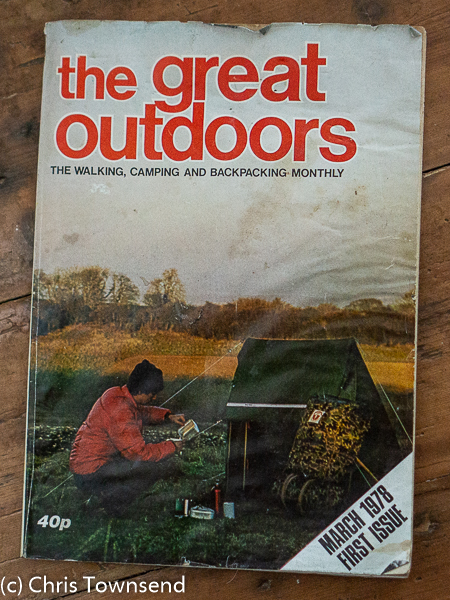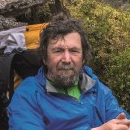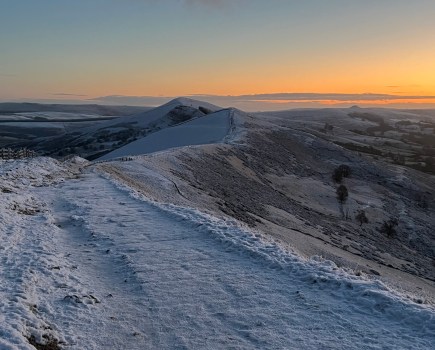As a landowner tries to get wild camping on Dartmoor banned, Chris Townsend defends this integral part of hillwalking and mountaineering.
Wild camping on Dartmoor is in the news, and not in a good way, has become an annual summer story. Tales of litter, fires, trashed camp sites are good for engendering outrage and that’s good for those landowners who’d like to stop or limit wild camping.
Main image: wild camping on Middle Staple Tor, Dartmoor. Credit: Chris Townsend
This opinion piece originally appeared in the June 2022 issue of The Great Outdoors.
One of these has popped up on Dartmoor recently, a place well known in the outdoors world as the only part of England where wild camping is legal, at least in certain areas. The landowner has made a claim in the high court that the Dartmoor National Park’s bylaws allowing for responsible wild camping aren’t legal and that there’s no legal right to camp on Dartmoor. Happily, the National Park Authority has said it will resist this claim and defend the right to wild camp. Backpack camping, as the Park calls it, is defined as “carrying your own equipment as part of your walk and staying one- or two-nights max.”
This isn’t the wild camping that is too often in the news. Mostly that is roadside camping. On Dartmoor the Park says, “you must camp at least 100m from the road, making sure you are out of sight and leave no trace”. The only other place this approach is codified is in the Scottish Outdoor Access Code (SOAC). It’s been part of outdoor culture for many decades, however. I learnt it as a beginner backpacker both from books (no Internet then), outdoor magazines and other walkers and applied it on my first long distance walk, from Land’s End to John O’Groats, long before the SOAC.
Firmly established

The first issue of The Great Outdoors
That wild camping has long been a firmly established part of the outdoors world is shown by the cover of the first issue of The Great Outdoors, which shows a wild camp. The only difference is it wasn’t called wild camping back then. It was just called backpacking. Just about every issue of the magazine has had at least one wild camping story ever since.
When the debate on access in Scotland was fierce landowners objected to wild camping becoming a legal right, spinning scare stories about making it easier for thieves and poachers to operate. Those arguing for it as an integral part of mountaineering and hillwalking thankfully won the day.
There are a few campers who behave badly, and this is awful and should be discouraged. However, put in the context of conserving and restoring nature and wild land I think it’s only a minor problem. Yes, this vandalism does do damage, especially when tree branches are hacked off and campfires are burnt into the ground. But trees regrow, fire rings can be erased, and litter collected. The areas with these problems are not large anyway, but they are very visible as they’re usually next to roads and often at popular beauty spots. In the overall picture of what is happening to wild land it’s not one of the big problems. I spend many nights wild camping in the Highlands every year and I rarely see any sign of damage by campers except close to roads in a few popular places.
Far greater damage
Take campfires. Mostly these create a small patch of burnt ground and perhaps some damage to nearby trees. Very occasionally one gets out of control and devastates a larger area. Certainly, such fires are a bad idea and should be discouraged. But far greater damage is caused by heather burning on grouse moors, which takes place on vast areas of high ground every year, killing wildlife and creating a monoculture. Animals are sometimes killed by litter that isn’t cleared up. Thousands are killed deliberately on those same grouse moors, all so a few people can blast small birds out of the sky. The devastated landscape of a driven grouse moor is vastly more damaging than some roadside campers leaving rubbish behind.
Those grouse moors mean roads too, bulldozed across the hills. In recent years there has been an increase in these and an increase in their size. Then there’s over-grazing by sheep and deer, monoculture spruce plantations, wind farms and hydro plants. The first two lead to biological deserts with little wildlife and poor vegetation. When I walked through the Southern Uplands on my Scottish Watershed walk I was dismayed at how little wildlife there was, most of the hills consisting of sheep pasture interspersed with plantations and the occasional wind farm. The latter along with hydro plants bring roads and further damage. Glen Etive is one of the areas that has suffered from inconsiderate roadside campers. However, they’ve had minimal effect compared to the damage being done by the current hydro developments.
Roadside camping is not the big problem. It is the industrialisation of wild places which is the far bigger threat. When it comes to wild camping, we need to defend this essential part of hillwalking and mountaineering.
Read more: The Right to Roam movement has been reborn on Dartmoor. What now?








